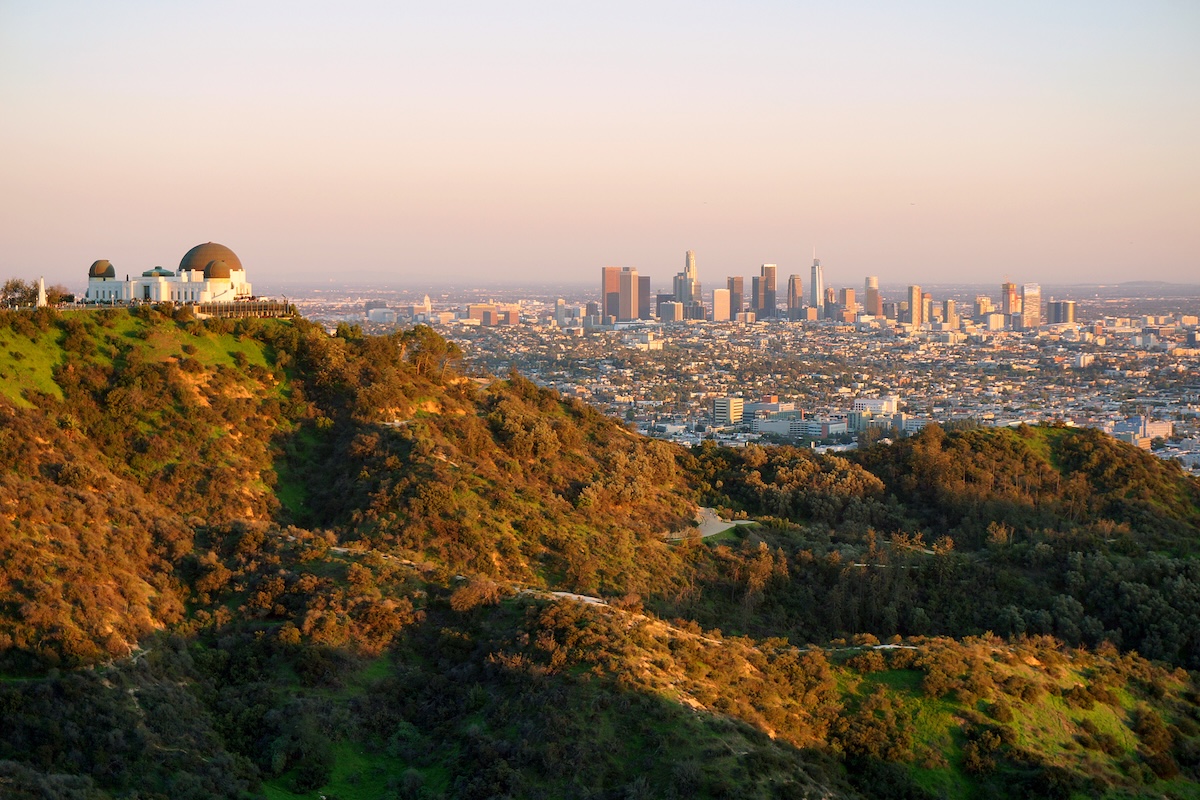A view of downtown LA from the famed Griffith Park. (Image via Flickr. Published under CC by 2.0 license.)
LOS ANGELES, Calif. — The park system in America’s second largest city is embarking on an ambitious turnaround.
In recent years, Los Angeles has plunged in a national ranking of park systems in the country’s largest cities — to number 88 out of 100.
A lack of adequate funding and inequities in access to parks is driving the decline, according to the Trust for Public Lands, which compiles the nationwide “park score.”
The problems have been decades in the making. In Los Angeles, nearly four out of 10 residents do not have a park within walking distance of their homes. Low-income residents of color are much more likely not to have a neighborhood park than wealthier white residents. The city faces a $2.1 billion backlog in deferred park maintenance and has been losing staff positions in recent years.
“If any Angeleno goes to their local park or their local swimming pool or tries to play basketball at one of the city courts, they’re often in disarray,” said Guillermo Rodriguez, state director for the Trust for Public Land.
Rodriguez is among a coalition of park advocates supporting a citywide effort to improve parks and close the gap in access.
Making matters more urgent, a parcel tax that provided up to $25 million a year for city parks is set to expire next year. And voters rejected a replacement measure in 2022.
So, the city is now turning to residents for guidance and support. The city’s department of recreation and parks and recreation is launching an ambitious effort to engage residents across the city in a “park needs assessment” to understand what residents think of the city’s parks and what kinds of changes they would like to see in the park system.
Advocates hope the needs assessment will build a stronger case for increased future funding and allow all communities to have a say in what their city park system looks like for decades to come.
“It’s not just looking at next year, the following year, or a few years out, but over the coming decades at what Angelenos need in their parks,” said Jessica Henson, a partner with the urban design and landscape architecture firm OLIN, which is coordinating a team selected by the city to conduct the needs assessment.
Beginning next month, meetings, workshops, and events with hands-on exercises in multiple languages will take place in diverse neighborhoods throughout the city, in parks, senior centers, and schools, so that residents can voice their current concerns and priorities for the future.
“We want to meet people where they are at,” said Henson.
Postcards, flyers, and social media videos will spread the word in Spanish, Chinese, Korean and other languages. A multilingual website will feature an interactive tool with information about each of the city’s 559 parks.
“People will be able to search for their local park and check the condition of its facilities,” said Henson.
A multilingual citywide survey will also ask residents to share their opinions on key questions, such as: Do you feel safe in parks? And do you feel like you belong in parks?
“Our goal is to be able to make informed decisions based on what people see as the priorities for the park system,” said Darryl Ford, superintendent of planning and construction in the city’s department of recreation and parks.
Ford said current problems in the city’s park system are the result of decisions made decades ago. And residents can now help the city set a new direction for decades to come.
Input from residents will be combined with innovative data analysis and mapping tools to project future needs for parks across the city and prioritize investments for years to come.
With its inclusive and far-reaching approach, “this park needs assessment will be the best in its class,” said Jon Christensen, a UCLA professor who has studied park needs assessments around the country and is serving as a consultant in the process.
“It will set the stage for improving and expanding our park system across the city,” he added, prioritizing areas of highest need, and focusing park funding to achieve visible, tangible results for the residents of Los Angeles.”
Guillermo Rodriguez hopes that the needs assessment will persuade voters and elected officials that parks are not just an amenity that is “nice to have” but instead a necessity for all residents, especially in the face of climate change. “With a dramatic increase in how many hot days exist in L.A.,” he said, “parks with tree canopies can act as cooling centers in neighborhoods.”
Darryl Ford agreed: “Parks are a critical piece of infrastructure,” he said, “not just the cherry on top of a nice city.”




